Dry Carpet Cleaning vs Steam Cleaning
Dry carpet cleaning is a process that uses physical contact and very low moisture to remove soil from carpet, rug, and upholstery fibers. The most common method of dry carpet cleaning is the spin-bonnet method, which uses a buffer type machine that spins around on top of your carpet.
Angel Dry does not use this method.
We use a unique Austrian method with Austrian-made machines that employ counter-rotating brush action to physically remove soil particles, sort of like a toothbrush.
However, with hot water extraction used in traditional dry cleaning methods, here is what happens: Clean water is carried from your kitchen sink to a van in your driveway, where the water is heated up and then carried to a pressure washing and vacuum system.
Your carpet, rugs, and upholstery are cleaned with water jets and chemicals, as the metal steam cleaning wand passes back and forth on each section of the carpet, rug, or upholstered furniture.
Each pass of the wand takes around 2-3 seconds. On the first pass, the water jets forcibly remove most of the dirt from your carpet fibers in a downward direction. As the dirt is released from the carpet fibers, it mixes with the water.
Downward pressure and gravity carry much of this dirty water deep down into your floor or into your furniture’s cushioning.
The dirty water mixture is absorbed into your carpet pad, and in most cases, down into your wooden or concrete sub-floor. This is the problem with the traditional steam cleaning method!
THEN What Happens During Steam Cleaning??


After the first 2-3 second pass, otherwise known as the pressure-washing pass, the dirty water mixture is out of reach. The second pass of the steam cleaning wand goes back over the section to vacuum out any liquefied dirt that can be sucked up into the vacuum system.
This process happens so quickly, typically both passes of the steam cleaning wand in under five seconds. But it does not matter because the water jets are so powerful, combined with gravity, that the dirt and water mixture is almost immediately carried deep down into the carpet backing and underlayment pad.
At this point, the dirt is out of reach for even the most powerful vacuum system.
All of that dirty water just sits there, out of sight, which looks good to the customer…at least temporarily.
Then, after the process is complete, the leftover moisture in yourcarpet begins to evaporate. This often requiring several days, despite customers being told to stay off the surfaces for only a few hours.
In fact, it can take up to a week to completely dry out all of the moisture that rests under the carpet and in the sub-floor.
The same is true for upholstered furniture. The fabric may dry out in less than a day. But the foam, feathers, fiber fill, wood, and, metal components can remain exposed to moisture for several days.
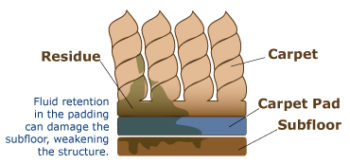 This causes damage to your valuable upholstery and furnishings in several unpleasant ways. The moisture is now mixed with all kinds of dirt, including oils, dead skin cells, microbial waste, and even living microorganisms.
This causes damage to your valuable upholstery and furnishings in several unpleasant ways. The moisture is now mixed with all kinds of dirt, including oils, dead skin cells, microbial waste, and even living microorganisms.
YUCK!
This situation also creates the ultimate breeding ground for many types of bacteria, fungi, mold, mildew, viruses, and dust mites. The whole process generates a cesspool of microbes in the very items that you wanted to be clean.
Technically, steam cleaners use a process called hot-water-extraction (HWE), which transfers hot water through hoses to a metal wand. Steam cleaning your carpet, rugs and upholstery makes about as much sense as washing 1,000 lbs. of clothes in a giant washing machine for 3-5 seconds. No rinse cycle. No spin cycle.
Then, spread the soaking wet clothes all over your home and attempt to vacuum up the dirty water and detergent, much of which would have immediately drained down or would be trapped in the absorbent clothing fibers.
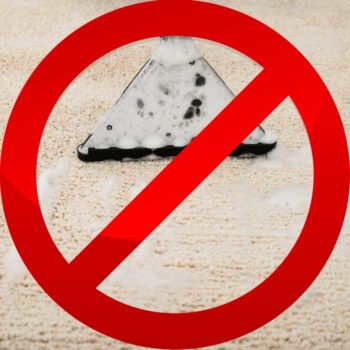
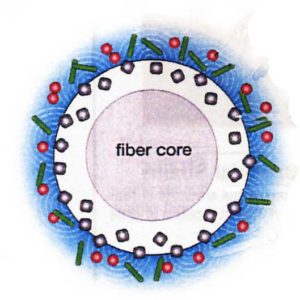
Let’s Review the Problem:
First, dirty water is forced deep down into the piling. Just a second later, the vacuum wand attempts to remove as much of this dirty water as possible. The dirty water, which has been forced down by pressure and gravity, is absorbed into the materials.
At this point, as we mentioned above, it is out of reach from the powerful vacuum. It is equivalent to trying to remove dirt from a wet rag with a wet/dry vac. You could try for hours, but the rag will still be wet, with the dirt still trapped in the fibers.
Furthermore, liquefied dirt and detergent will drain down into wet carpet, rugs, and upholstery. Not all types of microbes emit an identifiable odor, but common sense is screaming at us – don’t leave wet things laying around the house!
It just doesn’t make any sense, yet millions of people do it every day. They know that wet clothes should be put in the dryer right away. Floor spills should be mopped up right away. Rooms with excessive humidity or sub-floor moisture should be force-dried with fans and dehumidifiers.
When fibers, fabrics, and absorbent materials take on moisture, this creates a breeding ground for bacteria, viruses, mold, mildew, and dust mites. These microbes and pathogens reproduce quickly, creating large quantities of biological waste, contaminants, and allergens that can quickly spread.
This whole process rapidly creates unsanitary surfaces and poor indoor air quality.
Why Steam Cleaning is Such a Bad Idea:
One reason that consumers put off having their carpet, area rugs, and upholstery cleaned is the inconvenience of waiting for wet materials to completely dry out.
- Consumers are intuitively aware that excess moisture is not conducive to a healthy and sanitary environment.
- Wet clothes should be put in the drier immediately.
- Floor spills should be mopped up right away.
- Rooms with excessive humidity or sub-floor moisture should be force dried and dehumidified.
The microbes and pathogens that flourish in damp environments can create unsanitary soft surfaces, as well as poor indoor air quality conditions, including airborne allergens.
Unfortunately, many microorganisms and their biological contaminants are undetectable. It is for this reason that consumers should always weigh the risk of introducing excessive amounts of moisture into a home or office environment without force-drying after getting carpets steam cleaned.
Steam cleaning companies may claim to offer a “dry” or “fast-drying” service, but unfortunately this is rarely the case. Steam cleaning, in fact, does not use steam at all.
The phrase “steam cleaning” conjures an image of steam lifting the contaminants out of your flooring and upholstery. But we know, based on the process described above, that it’s actually getting shoved even further down into the fibers and padding.
As all of the deep down moisture evaporates over a period of several days, tiny droplets of water will “wick back” up each fiber. The water will eventually evaporate, breaking apart into oxygen and hydrogen gas, leaving behind dried soil.
In the carpet cleaning industry, we refer to this phenomenon as “wick back,” when stains reappear days or weeks after a carpet cleaning service.
Suffice it to say, your carpet is not nearly as clean as it looks initially. And the truth will, quite literally, rise to the surface eventually.
If you happen to have a wooden sub-floor (usually plywood or OSB) under your carpet, such as most 2nd floors in residential homes, you should be careful to prevent excess moisture from permeating beneath your carpet.
As microorganisms thrive in a protected habitat such as wet carpet, they generate biological contaminants that quickly spread.
This is sometimes noticeable by a pungent odor, such as the gases released by fungi and mildew. Other times, the airborne microbes are virtually undetectable.
Why FULLY DRY is So Critical
For a healthy and sanitary living environment, it is critically important to quickly and completely dry out your cleaned carpet, rugs, and upholstery.
This is typically done with professional air movers, dehumidifiers, and most preferably, with the use of heat sources. This process is not typically offered by steam cleaning companies.
However, as consumers have become more aware of the dangers of moisture in an interior environment, many carpet cleaning companies have started offering forced drying services as an add-on service for preventative and sanitary purposes.
As we mentioned previously, stains, spots, and residue often “wick back” during the evaporation process. The sticky residue left behind is like a magnet for new soil, making it difficult to vacuum due to the soil particles become stuck to the carpet fibers.
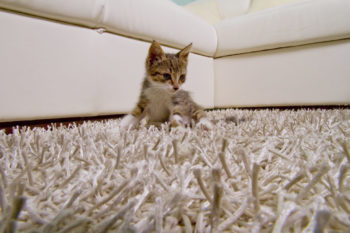
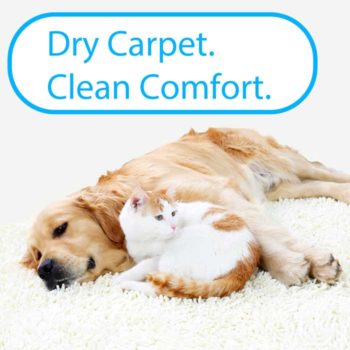
ALL Soft Surfaces Should be Fully Dry as Fast as Possible
The same is true for upholstery and area rug cleaning. Imagine doing a 1,000 lb. load of laundry without a rinse or spin cycle and spreading all of the clean wet clothing across your floor to air dry without a disinfecting heat source.
Your entire home would begin to smell like mildew within a few hours- just one of many symptoms of a microbiological population explosion!
Many types of microbes, airborne pathogens, and dust mites thrive in densely protected yet breathable environments, particularly when excess moisture is introduced. It should be noted that the majority of microbial pathogens are moisture-loving, rapidly spreading in wet environments, even after a thorough cleaning.
Skeptical? Try doing a load of laundry and leave your wet post-spin-cycle clothes in the washing machine for a few hours. You will smell the effects of how pervasive microscopic pathogens can be. And it’s not just mildew.
Of course, with steam cleaning, there is no rinse cycle or spin cycle, just a couple of passes of the magic wand, first forcing liquefied soil downward, then vacuuming up only a fraction of it. This leaves behind a temporary illusion of clean carpet. Micro-life always finds a way to thrive in wet environments.
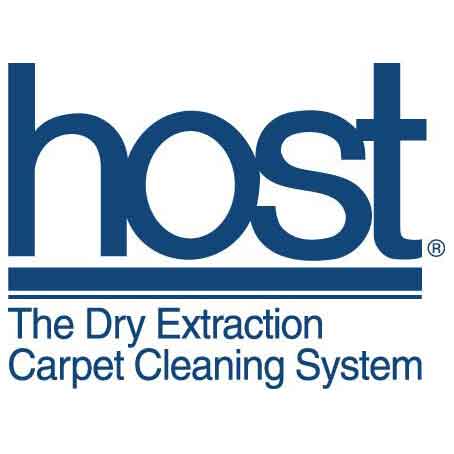
Host® Dry carpet cleaning is the most trusted solution for commercial and residential customers who prefer all-natural cleaning solutions. Much like the newer innovation of encapsulation cleaning, the Host process uses counter-rotating brush machines to lift away soil, stains, and residue from carpet fibers.

Angel Dry specializes in ultra-low-moisture encapsulation carpet cleaning. We only use Green Seal certified products on your carpet, such as Crystal Dry® by Whittaker Systems. All Crystal Dry® cleaning products are made with an emulsifying formula that encapsulates dirt and oils that are typically left behind with other cleaning methods.
Carpet Steam Cleaning

When you schedule a steam cleaning service with us, one of our veteran technicians will arrive at your home with state-of-the-art equipment, prepared to address all of your needs, delivering exceptional service with focus and agility.


